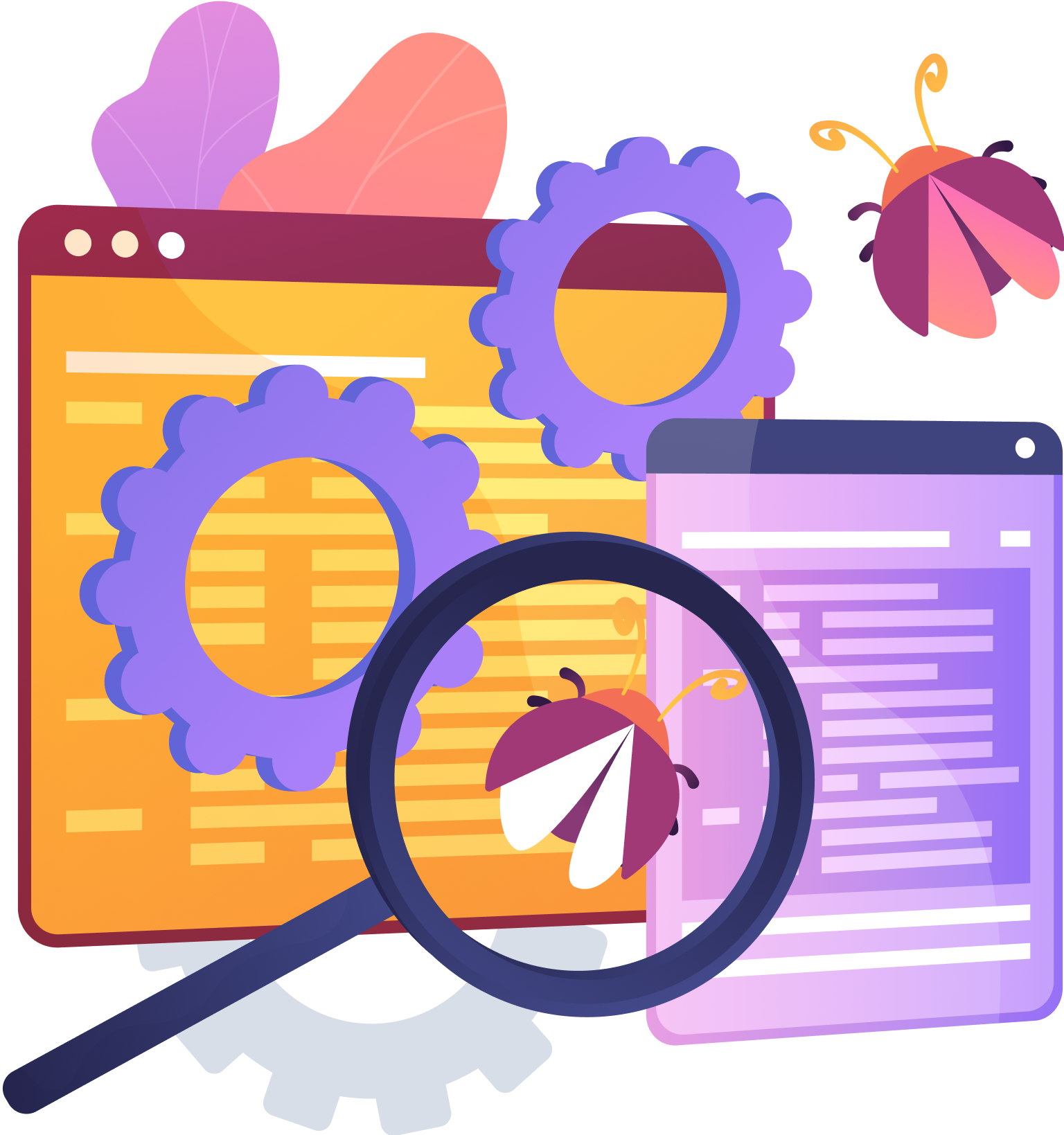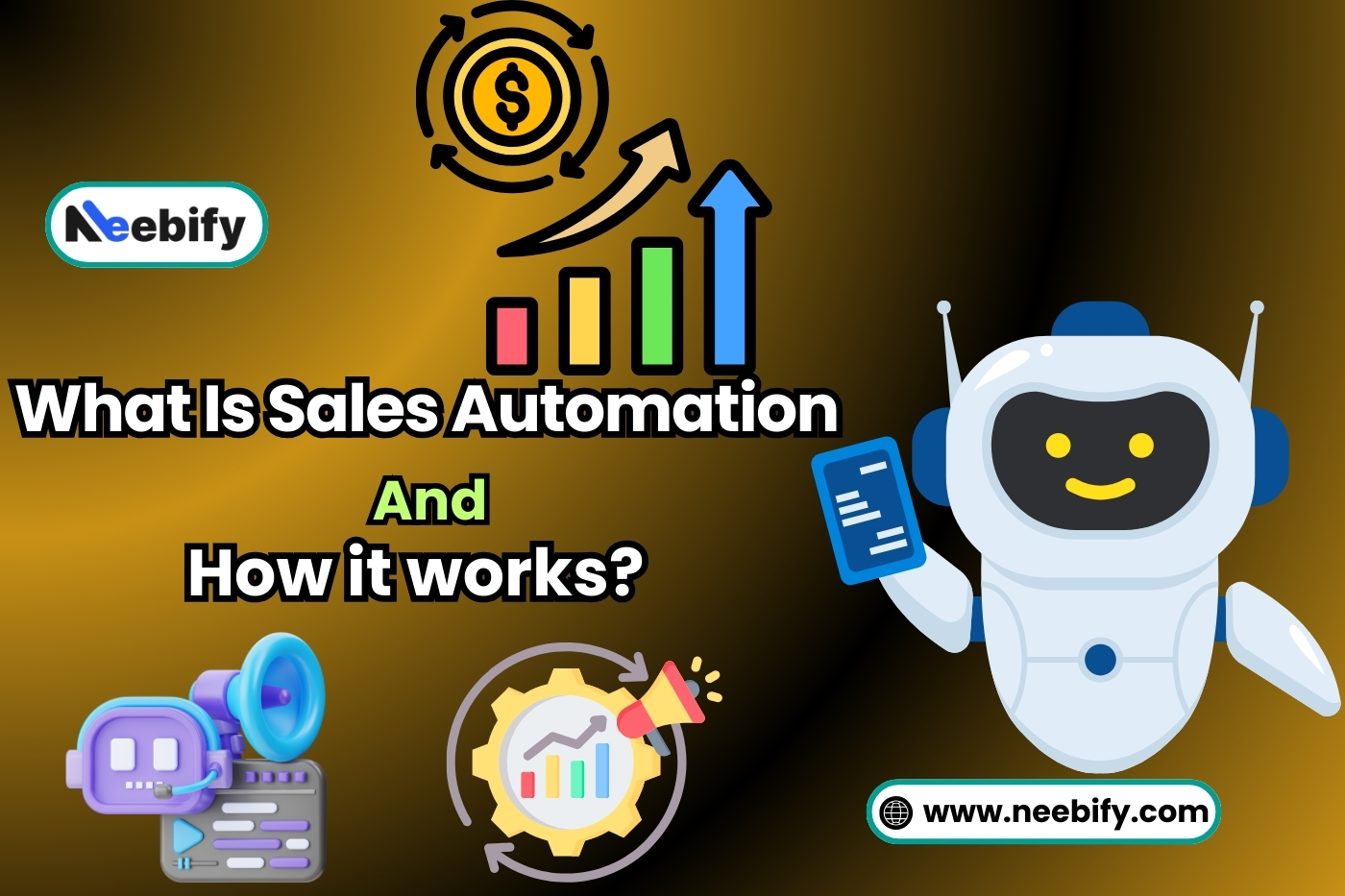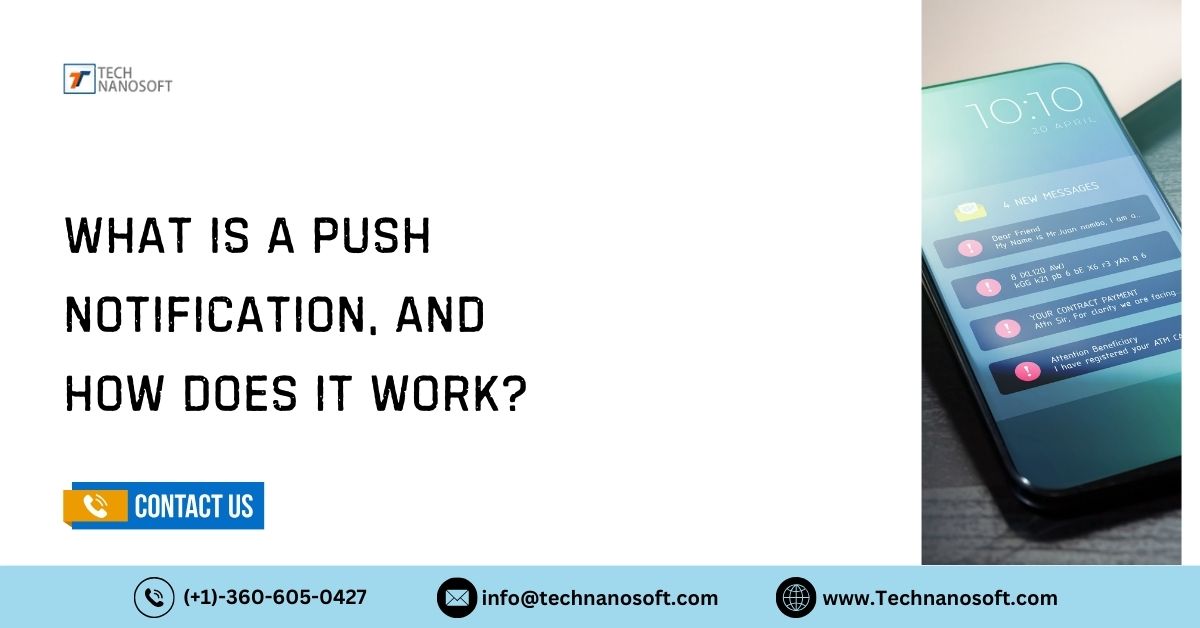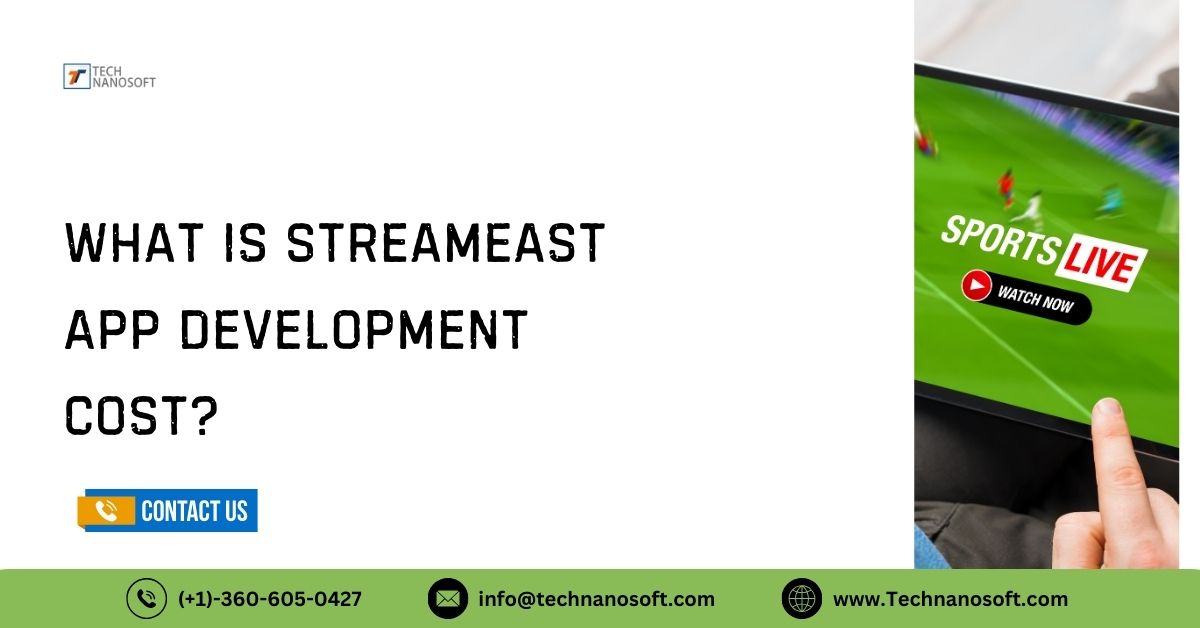What is a Point of Sale System, and How To Develop?
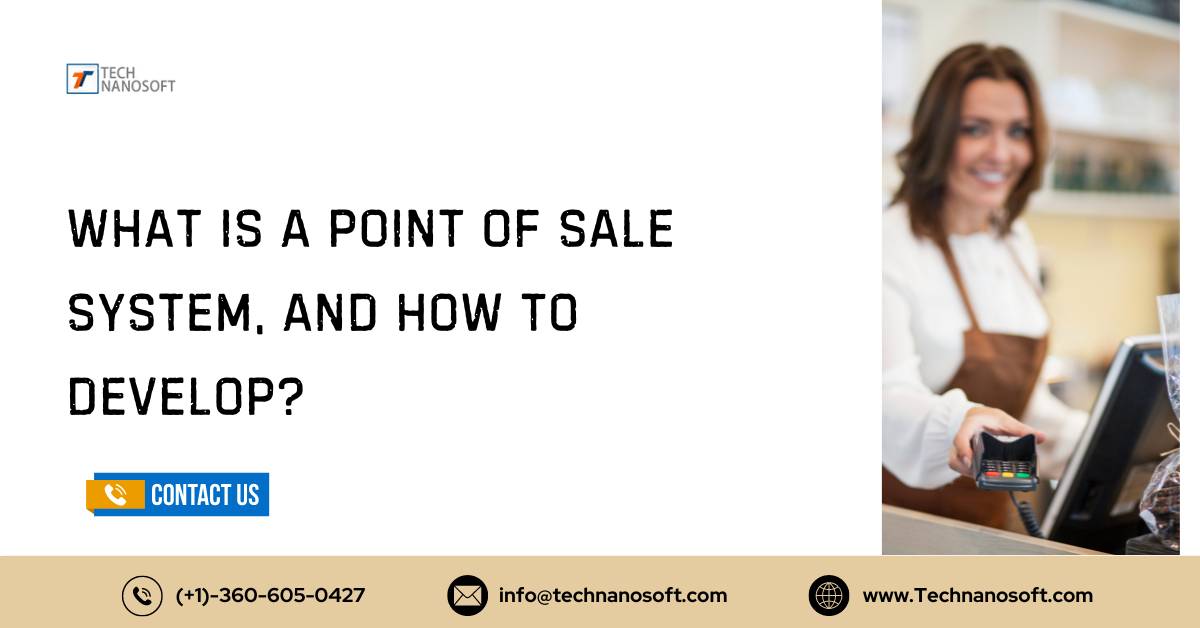
In this piece, we talked about how efficiency and innovation can change the retail and hospitality industries. This piece goes into great detail about the pos meaning like what is point of sale, including pos is what are and their pros and cons. Learn about the various types of POS software available, as well as the features required to build a strong POS system.
Learn helpful information about how much it costs to make a POS app, as well as the most important things you should think about before starting to make one. Join us as we learn about the ins and outs of point-of-sale (POS) systems, so that businesses can make smart choices as they strive for operational greatness.
What is POS?
A point of sale also known as point of purchase (POS) is a computerized location where a customer makes a purchase. Think of a system that counts sales, takes payments, and rings up things. It has both software and hardware, like cash machines, card readers, and barcode scanners. The point of sale (POS) system figures out the total cost of the purchase, takes the payment, and updates the inventory records.
These days, point of sale (POS) systems can even keep track of supplies, look at sales data, and run loyalty programs. POS systems help companies operate more efficiently and provide customers with a smoother transaction process. They also offer valuable business insights.
How Much Does It Cost To Build POS Systems?
Many costs go into making a POS system, including hardware, software, and development. The cost of hardware like cash registers, barcode readers, and receipt printers is between $500 and $5,000. Usually, it costs between $40,000 and $50,000 to make a basic point of sale system with the most essential features. The price can go up to $90,000 if you need more advanced tools and can connect to your phone.
These estimates cover everything from hardware to software creation, integration, and ongoing upkeep. There may be monthly fees of $50 to $300 for cloud-based options. Building a point of sale (POS) system can cost anywhere from a few thousand dollars to tens of thousands of dollars, depending on the needs of the business and the system's features.
Remember- To get the correct app cost estimates, talk to experienced developers. They create assessments that align with your project wants and goals.
Advantages and Disadvantages of Point of Sale System
Advantages:
1. More data storage with infinite journal entries.
2. Quantities without limitations.
3. It is easier to use than the ECR cash register.
4. More accurate work through features like inventory management systems (IMS), cash management, and payment terminals with connecting PINs.
Disadvantages:
1. The high price on purchases.
2. The ECR cash register comparison has extra-sensitive interference.
3. Malware and security risks.
READ ALSO- How Does Gyroscope Sensors Work for Mobile Applications?
Types of Point of Sale Systems
Mobile Point of Sale (mPOS)
Mobile Point of Sale (mPOS) solutions let you make purchases with your phone or tablet. The small businesses, pop-up shops, and outdoor markets that use mPOS systems love how movable, cheap, and simple they are to use. They let companies take payments anywhere, which makes things easier for customers and opens up more sales possibilities. mPOS systems help companies manage inventory and track sales while on the move, providing freedom and efficiency.
Cloud-Based Point of Sale (Cloud POS)
Cloud-based point of sale systems store data on remote computers, accessible from any device with an internet connection. Businesses of all sizes can use a cloud POS system. The system can easily grow with your needs. It can automatically update and be managed remotely.
They give you sales and inventory information in real time, which makes it easier to handle multiple locations. Cloud POS systems are a modern solution for businesses to adapt to changing needs. They provide improved security and lower upfront costs.
Terminal POS
Shops and restaurants typically use stand-alone, traditional point of sale (POS) systems. They include hardware such as cash registers, barcode readers, and receipt printers. These systems are robust and reliable due to their ability to handle a wide range of activities.
Cash register systems have useful features like tracking inventory, managing staff, and providing detailed reports for businesses. These features make them ideal for established companies with high foot traffic.
Tablet POS System
Tablet point of sale (POS) systems use tablets as their primary interface, which makes them look more modern and sleek than standard setups. Tablet point-of-sale (POS) systems are easy to move around and use, making them perfect for small businesses and shops. They have things like product management, touch-screen navigation, and tools for building relationships with customers. Tablet POS systems make operations faster and improve customer experience by connecting apps and processing payments.
Self-Service Kiosk (POS)
Self-service counter POS systems allow customers to pay and place orders without the assistance of a cashier. These methods cut down on wait times and speed up service. They are often found in fast-food restaurants, movie theatres, and stores.
They make customers happier by providing a personalized, quick-buying experience. Self-service kiosks are useful in busy areas as they reduce labor costs and make operations faster.
Multichannel POS Systems
Multichannel point of sale (POS) systems combine sales from different platforms, like mobile, online, and in-store. These systems give companies a single view of their products and customer data. This is helpful for businesses that sell on various platforms.
Multichannel point of sale (POS) systems make it easy for customers to switch between shopping channels without any problems. They provide complete analytics that help companies improve their overall success and make their strategies work better.
Open-Source POS Systems
Open-source point of sale (POS) systems provide adaptable solutions for tech-savvy companies. Through these tools, businesses can change the software to fit their needs by getting access to the source code. Open-source point of sale (POS) systems can be cheap and easy to expand, making them perfect for startups and businesses with specific needs. They give you the freedom to come up with new ideas and change things while still providing tools like inventory management, sales reporting, and customer data tracking.
Essential Features To Build a POS System
Inventory management and command: Inventory tracking with scanning QR codes, e-commerce collaboration for perfect sales point, and product stock management for separate items.
Account and payment management: cash management and PCI features for settled payments, card payment integrations, and the receipt module for fast payments.
Report and analytics: sales report for decision-making, accounting system for different file exports, and financial compliance.
Team productivity and employee management: user access control permission, staff scheduling with timesheets and roaster management, and training mode for employees.
Customer management: customer information profile for improve services, gift card integration, and loyalty management for customer care.
Step-by-Step Guide To Build a Secure POS System
Features and Objective
To make a safe point of sale (POS) system, you must first list the most essential functions and features. Process transactions, keep track of inventory, handle relationships with customers, and make reports.
Also, security features like logging in as a user, encrypting data, and safe payment processes should be added. Scalability and support for multiple platforms are also essential. The POS system meets all operating and security standards by defining these requirements based on what the business needs.
Choose Tech Stack
It's essential to choose the right tech stack. Choose a mix of technologies that are strong, flexible, and safe. For the backend, you could use Node.js or Python with tools like Express or Django. Use React or Angular for the front end.
For secure data handling, you can use MySQL or MongoDB as a database. Make sure that your tech stack supports safe, quick, and easy-to-manage development that works with the features you've chosen.
Build POS Software
Choose the tech stack you want to use and set up the working environment. Then, start making the POS software. Create the front-end layout, making sure it's responsive and easy for people to use. Add back-end features like handling transactions, keeping track of supplies, and managing customers.
Make secure coding a priority, and use modular design to make upkeep and updates easy. Maintaining high-quality standards requires frequent code reviews.
Payment Processing Integration
To ensure secure payment processing, choose secure payment systems such as Stripe, PayPal, or Square. Use APIs to make transfers go smoothly and ensure that you're PCI-compliant. Encryption and tokenization are two ways to keep private data safe.
Thoroughly test payment methods to make sure they can handle different situations, such as chargebacks and refunds. To protect against holes, keep the system up-to-date with the latest security changes.
Test and Make Errors-free
Test the POS system thoroughly to make sure it works correctly and is safe. To check the performance, run unit, integration, and system tests. Use methods for checking security, such as vulnerability scanning and penetration testing.
User acceptance testing is used to ensure that the system meets user needs. Address any identified issues promptly, and continue testing the system until it demonstrates strength and reliability.
Collaboration
Collaboration is essential during the whole creation process. Manage your projects with tools like JIRA or Trello to keep track of all the jobs and progress. For code management, use version control tools like Git.
To regular code reviews and team talks to make sure everyone is on the same page and the work is good. To solve problems quickly and keep the development process running smoothly, encourage open conversation and feedback.
Things To Think Before Developing A POS Application
Understanding Business Needs and Goals
Before making a POS app, you need to make sure you know what your business wants and needs. Do a complete study of your business, how you make sales point, and what your customers want. Find problems and ways to improve the POS system so that it fits with your business goals and is more efficient and profitable overall.
Choosing a POS System Type
It is essential to choose the right type of POS system. Think about things like the size of your business, the needs of your market, and your budget. Traditional on-premise systems, cloud-based solutions, and mobile point of sale apps are all options. Pick the type of system that has the features, freedom, and ability to grow that your business needs.
Features of POS System
When making a POS app, make sure to include the essential features that make sales more accessible and improve the customer experience. Inventory management, sales tracking, analysis and analytics, customer relationship management (CRM), and the ability to connect to other business systems are some of the most important features to think about. Customizable features that are specific to your industry and business needs can make the POS system even more useful and efficient.
Deployment and Maintenance
Coordinate the installation and ongoing maintenance of the POS application. Decide whether to install the system on-site or in the cloud to enable remote access and future expansion. Set up a maintenance plan for regular support, updates, and security patches. Teaching staff how to use the POS system correctly is also crucial for its long-term use.
How can TechnanoSoft Assist You with The POS System?
TechnanoSoft is an expert at offering complete services for developing and setting up point of sale (POS) systems. Our team of skilled professionals works hard to make sure that the POS options we offer are perfect for your business. We are experts in every part of POS system creation, from the first consultation to the final deployment.
We make sure that our solutions are not only strong and reliable but also scalable for future growth by focusing on new ideas, security, and user experience. Working with TechnanoSoft provides you with unparalleled access to cutting-edge technology and assistance. This gives your business the tools it needs to succeed in today's market.
FAQs About Points of Sales Software
Q.1- what is point of sale pos system/pos meaning and pos system benefits for small business?
A- POS software makes it easier to check out customers, keeps track of goods, gives businesses helpful information about sales through reports, improves customer service, and lets them accept credit cards, mobile payments, and cash.
Q.2- What types of businesses can benefit from POS software?
A- Many types of businesses, including grocery shops, salons, spas, restaurants, cafes, bars, and more, can use POS software due to its flexibility. Point of sale (POS) software is useful for almost any business that sells goods or services.
Q.3- What features should I look for in POS software?
A- When you're picking POS software, think about what features you need. This could include inventory tracking, sales reporting, and employee management. You might also want customizable menus and integration with other software. Make sure the software has secure payment processing and can scale with your business as it grows.
Q.4- Pos system for small business?
A- Yes, small businesses can use POS software well. Many point of sale (POS) systems are affordable and can grow with your business. POS software can also help small companies to be more productive, keep track of their goods better, and give better customer service.

